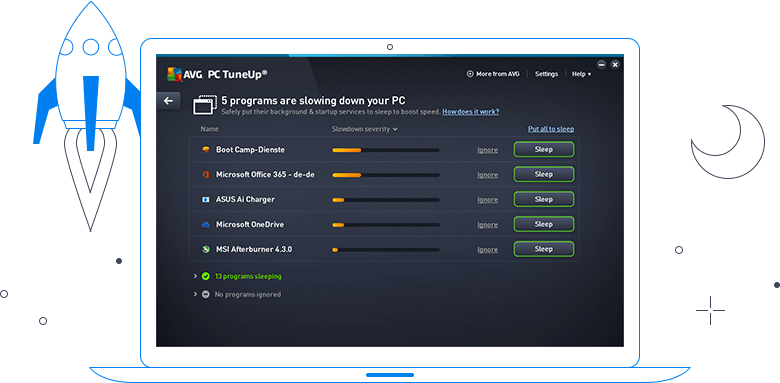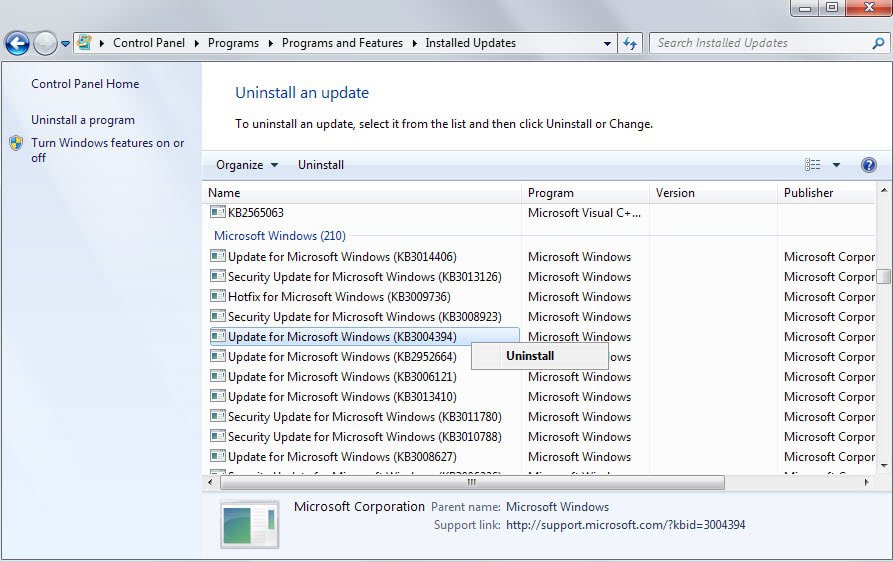Avg Update Failed Windows 10
Fortunately, the issue appears to be limited to a relatively small subset of Windows 10 devices. You are at greatest risk if you have a machine that was previously part of the Windows Insider Program but was then removed from the program. The most likely time for this to happen was in late July or early August, after the release of the Anniversary Update.And indeed, I encountered the failed update on two systems that matched that description to a T.
Feb 16, 2016 Need instructions on how to uninstall AVG anti-virus from your Windows 10 computer? I'll go through the steps on removing AVG in this video tutorial. Home » Utilities » AVG Remover Tool and AVG Clear Tool 2019 Free Download For Windows 10,8,7,XP Uninstall Any AVG Products AVG Remover Tool and AVG Clear Tool 2019 helps to completely uninstall or remove any AVG product from very deep.
Both had been part of the Windows Insider Program but were removed when the Release Preview build arrived and are now running the public (Current Branch) release, build 14393.Update: Microsoft has now released a fix-it script. The is a Microsoft Installer file that makes the same changes I describe in the next section, without requiring any registry edits or permission changes.Microsoft says it's working on a fix.
Until that fix arrives, however, you can minimize frustration by doing one of two things.Option one: Block the update temporarily.To do that, download and run the Windows 10 'Show or hide updates' troubleshooter. In an ironic coincidence, I posted how-to instructions for this tool on the same day that the troublesome update was released. (See.)The update, KB3073930, is. Run the wizard, then choose Hide Updates, and select the KB3194496 update from this list.Use this troubleshooter to temporarily block the update.Finish the wizard and you'll be spared from this update for a few weeks - presumably long enough for Microsoft to fix what's wrong. When the update is re-released, it should automatically appear. To remove the update from the 'hidden' list so that it appears in Windows Update, run the troubleshooter again and choose Show Hidden Updates.Option 2: Configure the system to process the update.The cause of the bug is an obscure scheduled task intended to save Xbox Live games. Even if you've never played an Xbox Live game, this task is still there, and something about it is causing the cumulative update to choke.Running the Microsoft-supplied script removes those blocking tasks, and has the same effect as the following manual steps:1.
In File Explorer, open C:WindowsSystem32TasksMicrosoft. (You might need to click a consent dialog box to gain access to this folder.) Delete the entire XblGameSave subfolder.2. Using Registry Editor, delete the following key:HKEYLOCALMACHINESOFTWAREMicrosoftWindowsNTCurrentVersionScheduleTaskCacheTreeMicrosoftXblGameSaveRemove this registry key to allow the update to proceedDelete that key, which will also delete any values and subkeys associated with it.Now re-run Windows Update and allow the cumulative update to install.
It should successfully complete. You can confirm by looking in Settings Update & Security Windows Update Update History.
Here's what one of my test systems looked like after I made those modifications following two unsuccessful installations.Mission accomplishedI hope Microsoft will publish a post-mortem after this incident is resolved so that its customers can learn what the company is doing to prevent similar incidents in the future. One encouraging sign is that this issue was identified and should be fixed within roughly a week (assuming that a fix is published within the next day or two).It's also worth asking why this trivial, consumer-focused piece of Windows is able to gum up enterprise editions.Meanwhile, the snafu is more evidence that smart businesses should be using Windows Update for Business to delay updates by a week or two.

That's the surest way I know to avoid being bitten by a future defective update. Related Topics.
By registering you become a member of the CBS Interactive family of sites and you have read and agree to the,. You agree to receive updates, alerts and promotions from CBS and that CBS may share information about you with our marketing partners so that they may contact you by email or otherwise about their products or services.You will also receive a complimentary subscription to the ZDNet's Tech Update Today and ZDNet Announcement newsletters. You may unsubscribe from these newsletters at any time.ACCEPT & CLOSE.


Hello everyone I have a problem updating my windows to version 1703 (Currently on 1607). What happened was on my PC there was an update available and decided to update after it restarted I got the screen 'working on updates' So I decided to leave it there for a while and did something else when I came back all I saw was a black screen the PC wasn't like restarting or anything.
I waited 30 minutes and nothing has changed just black screen so I decided to force turn off my PC and turn it on again my PC was checking for repairs then went back to updating when it got to 87% the update just froze like nothing was moving at all not even the loading thing it's just literally froze I waited an hour and nothing so unfortunately I forced turned off my PC and it restored back to the previous version I look through the update history it says I have updated the windows 10 creators update privacy settings? Which was the one I failed and I looked at the version I was and it's still 1607 (screenshots below) and when I try to update it says it's up to date.
I am kinda panicking a little and was wondering why is this happening to my gaming computer.Oh by the way I went to troubleshooting and this is what I got a lot of errorsUpdate:I ran troubleshooter again and got the same thing 'Repair Windows Update Database Corruption' Dang this makes me more panicking. Honestly, I hope this really gets fixed. Why?- it lets you create a useful bootable medium with some repair features- you can use it to do a future clean install or in-place upgrade- if the upgrade fails, you can repeat it without downloading again.Hi, if you follow the link I gave you to a tutorial here, you should be able to download the current major build (the CU).But don't get over-excited- before you upgrade, as I said, create a disk image. (Macrium, Windows Backup, to external data storage).That way you can recover if things go wrong- and they can.Before you upgrade using the iso you've downloaded (or you could burn a DVD or create a bootable USB drive) disconnect any unnecessary peripherals. Wireless mice have sometimes caused problems. Hi, if you follow the link I gave you to a tutorial here, you should be able to download the current major build (the CU).But don't get over-excited- before you upgrade, as I said, create a disk image. (Macrium, Windows Backup, to external data storage).That way you can recover if things go wrong- and they can.Before you upgrade using the iso you've downloaded (or you could burn a DVD or create a bootable USB drive) disconnect any unnecessary peripherals.
Wireless mice have sometimes caused problems.I don't see the download to upgrade to CU All I see is just Windows ISO. You download the ISO. The ISO file is what you use to update to the CU.For example, mount the ISO and run setup.exe.Or burn the ISO to a DVD, boot normally, and run setup.exe from the DVD.You have to have something as a source of information for the upgrade- all the new Windows files.
Those files are in the ISO file.Starting Setup.exe starts the installation process.It's the same as from step 4 here:(Don't read the beginning of the tutorial or you will be more confused).Ok, ill see these steps. I don't think I can create a disc image though cause that takes a lot of space to backup and I don't have like a hard drive or anything. Computer shop?If you have really fast upload speeds and enough cloud storage space that would do I suppose.Here's the trade-off - say £40-50 on a disk (new) vs seeking technical support for an unbootable PC and struggling over a couple of days, and then having to clean install.Plus the disk image acts as a full data backup - you can retrieves files and folders from it.If your disk fails, you can just put a new one in, restore your system image and you're back where you were in an hour. Without that, you have to clean install.
Avg For Windows 10
Same with ransomware. Computer shop?If you have really fast upload speeds and enough cloud storage space that would do I suppose.Here's the trade-off - say £40-50 on a disk (new) vs seeking technical support for an unbootable PC and struggling over a couple of days, and then having to clean install.Plus the disk image acts as a full data backup - you can retrieves files and folders from it.If your disk fails, you can just put a new one in, restore your system image and you're back where you were in an hour. Without that, you have to clean install. Same with ransomware.I would literally do that but no money sadly xD I mean yes you may never know what will happen but I don't know.